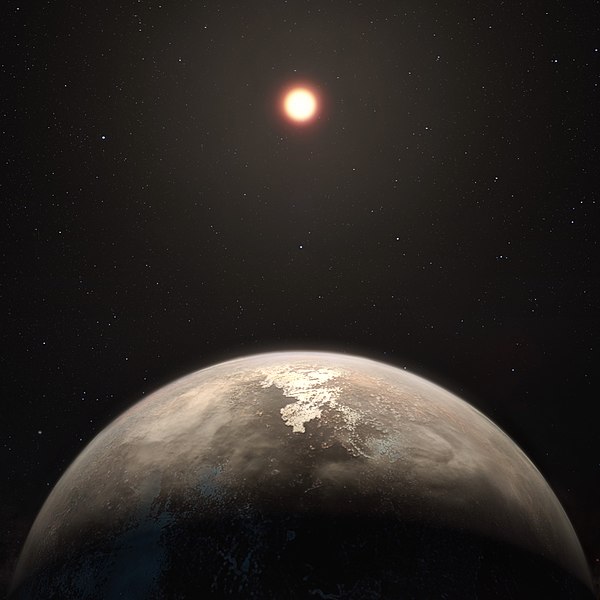“New Earth” Discovered

Credit: Wikimedia Commons.
A potentially hospitable planet, named Ross 128 b, has been discovered by a group of European and South American astronomers today, November 15th, 2017.
The team, led by Frenchman Xavier Bonfils, discovered the planet utilizing the world-leading planet-hunting instrument known as the High Accuracy Radial velocity Planet Searcher, or HARPS for short, according to Michelle Donahue of National Geographic.
Ross 128 b sits just 11 light-years away from Earth, which in an astronomical sense is practically right next door. It orbits a Red Dwarf Star not yet named, and is about one and a third times the mass of the Earth, according to Dr. Stuart Clark at The Guardian. In addition, it is about 20 percent closer to its star than the Earth is to the Sun.
This proximity actually works in Ross 128 b’s favor though, as Red Dwarf Stars are dimmer than Yellow Dwarf Stars like our Sun, therefore Ross 128 b is at a perfect distance from its star to harbor life.
In fact, according to National Geographic, this distance is so perfect that astronomers believe Ross 128 b could host an intact atmosphere and liquid water, although these factors also depend on the planet’s atmospheric makeup.
Senior Papa-Sam Essuman is just as excited for the prospect of this planet as the scientists who discovered it. A connoisseur of astronomy, Papa-Sam feels adamant that this planet can host life.
“Ross 128 b is everything astronomers are looking for in a planet. It lies in a perfect area from its star, and all the factors that are looked at when determine if a planet can host life are in its favor. I’d honestly be surprised if they didn’t find some sort of bacteria on its surface”.
Ross 128 b isn’t the first planet to fit this criteria though, nor is it the closest. That honor belongs to Proxima b, which according to The Guardian is only four and a quarter light years from Earth, and orbits a Red Dwarf Star just like Ross 128 b.
The complications with Proxima b lie not with the planet, but with the star it orbits, known as Proxima Centauri. According to The Guardian, Proxima Centauri is a younger star than the one Ross 128 b orbits by about two billion years, meaning it gives off large amounts of powerful stellar flares that are capable of roasting the planet of Proxima b with radiation, thereby rendering it uninhabitable.
As stated previously, Ross 128 b does not have this problem. The star it orbits is older, which means the stellar flares it gives off are much more manageable than those given off by Proxima Centauri. As a result it’s atmosphere might still be intact. However, the astronomers can’t determine this just yet.
“We definitely need more date before we can say anything conclusive” Xavier Bonfils told National Geographic.
Bonfils and his team will most utilize the next generation of gigantic telescopes in order to determine whether or not Ross 128 b’s atmosphere is still there or not, according to The Guardian. Until then, they remain hopeful that Ross 128 b can, and potentially already has, life.
Kyle Caddo is a senior from Chester, NJ. Originally from Long Island, Kyle plays for the hockey team.











